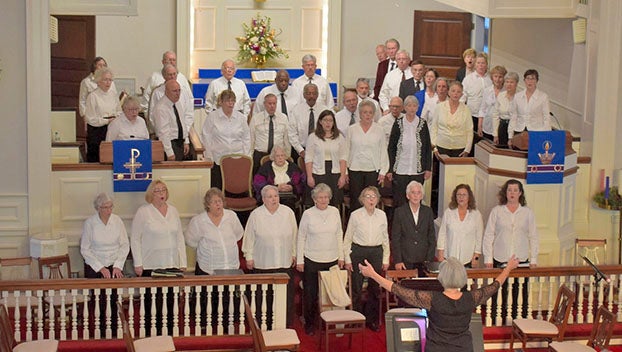VCU combines arts and medicine to help heal
Published 6:00 am Wednesday, November 4, 2020
|
Getting your Trinity Audio player ready...
|
Last year, 12 patients in the Supportive Care Clinic at VCU Massey Cancer Center stepped inside a conference room, donned motion sensors and engaged in a facilitated life review, acting out various parts of their lives through a virtual avatar displayed on a projection screen.
Recently, the unique collaboration between researchers at VCUarts and Massey’s Palliative Care Program was recognized with a tie for first place in the Second Annual Hamilton International Arts in Health Awards from the National Organization for Arts in Health (NOAH).
The Hamilton Awards are open to artists working in all media or arts in health programs in community or clinical settings. Applicants must demonstrate measurable improvements in the health and well-being of the intended population. NOAH jurors highlighted the project’s innovative approach to transforming traditional life review therapy into a dynamic, digital experience, and they also commended its evaluation of participant outcomes.
Details of the study, VoicingHan, were published in the International Journal of Performance Arts and Digital Media in June and the Journal of Palliative Medicine in September.
“There is a Korean concept known as ‘Han’ that reflects a paradoxical state of being that combines extreme grief with a great hope for overcoming a seemingly impossible situation,” Semi Ryu, MFA, an associate professor with joint appointments in the Department of Kinetic Imaging at VCUarts and the Department of Internal Medicine at VCU School of Medicine said. “Of all the people with whom I’ve discussed this concept, the palliative care team knew and understood it so deeply. It is exactly the scenario that their patients deal with every day. Han brought us together, instantly from the first meeting.”
Han in the context of Korean healing rituals is what inspired Ryu to apply her expertise in interactive art to a health care setting. Previously, she facilitated similar avatar-based life reviews with residents at a local nursing home. When she mentioned her work to John E. Nestler, M.D., MACP, physician-scientist in residence at VCUarts, he quickly connected her with Egidio Del Fabbro, M.D., director of Massey’s Palliative Care Program.
“We’ve known for a long time that people’s physical and psychological well-being are deeply connected. Palliative care is about relieving and managing symptoms, and a lot of our research focuses on how to do that without overprescribing medications,” says Del Fabbro, who is also the Palliative Care Endowed Chair at VCU Massey Cancer Center and a professor in the Division of Hematology, Oncology and Palliative Care at VCU School of Medicine. “Dr. Nestler and my team saw a lot of promise in translating Professor Ryu’s work to our patient population, so we applied for and received a pilot project grant from Massey to help fund the project.”
Participants in the study completed several questionnaires assessing their symptoms and spiritual well-being prior to the study and again a month later. One test, the Functional Assessment of Chronic Illness Therapy-Spiritual Well-Being Scale (FACIT-Sp), showed overall improvements in scores while another, the Edmonton Symptom Assessment System (ESAS), showed improvement in six of 11 patients.
Every participant in the study either agreed or strongly agreed that the experience was beneficial and helped them reflect on past, present and future hopes. Each responded that they would participate again and would recommend it to others.
“The results from the pilot study were overwhelmingly positive,” said Ryu. “Our plans to continue the work have been interrupted by the pandemic; however, we hope to extend the study to more patients in Massey’s Palliative Care Program. We are also exploring working with children with mental health issues, especially those with post-traumatic stress disorder.”
“I think VCU is at the forefront of integrating art in health care settings and showing that there can be positive impacts not only for our patients and their loved ones, but also for our providers and our medical students,” Nestler, who is also a professor of medicine in the Division of Endocrinology, Diabetes and Metabolism and former chair of the Department of Internal Medicine at VCU School of Medicine, said. “The Hamilton Award from NOAH demonstrates the progress and commitment VCU has made in these types of interdisciplinary collaborations, and we are starting to stand out internationally for demonstrating our impact using rigorous scientific methods.”
VoicingHan is one of many examples of the growing VCU Arts in Health program, a collaboration between VCU School of Medicine and VCUarts. Recognizing the innovative application of art for the benefit of cancer patients, the VCU Office of the Vice President for Research and Innovation nominated the project for the Hamilton International Arts in Health Award.
Other VCU School of Medicine initiatives include the use of embodiment, a combination of virtual reality (VR) and weighted garments applied to various parts of the body, so medical students can empathize with the experiences of patients with physical limitations and the elderly; improvisational training for medical students and doctors to enhance communication skills and help facilitate difficult conversations; and utilizing VR for practicing surgical procedures. In addition, a committee from VCUarts is collaborating with Children’s Hospital of Richmond at VCU to make its new children’s tower inviting for pediatric patients. The VCU Health Arts in Healthcare program also maintains vibrant rotating art exhibits throughout VCU Health facilities, hosts a lunchtime concert series at VCU Medical Center and employs music therapists to bring harmony and healing to patients’ bedsides.
“I’m honored by this award and thankful for my collaborators at Massey who helped make it possible and to VCUarts for their enthusiastic support,” said Ryu. “It’s exciting to be at an institution that supports special partnerships that nurture both art and health care, and to work with medical professionals who value the benefits that art can bring to the patient experience.”





